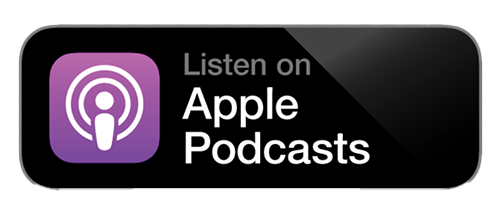Uncovering the Gritty Realities of Civil War Medicine on Happy Hour Holidaze
On this riveting episode of Happy Hour Holidaze, hosts Sean and Manny Febre bring their trademark blend of humor, hard-hitting questions, and entrepreneurial insights to a deep dive into one of American history’s most gruesome chapters—Civil War medicine. In Season 2, Episode 21, filmmaker and veteran Steve Hollingshead, alongside guest Dom, transports listeners back to an era where medical practices were as innovative as they were horrifying. This detailed blog post explores the highlights of the discussion and provides insights into the challenges and breakthroughs that defined battlefield medicine during the Civil War.
A No-Holds-Barred Look at Battlefield Surgery
From the outset, the conversation sets the stage with an unfiltered look at the brutal reality of war. Steve Hollingshead explains how Civil War medicine was far removed from our modern-day practices. In a time when over 600,000 lives were lost—and disease claimed even more—doctors and surgeons were forced to work in makeshift regimental hospitals, often set up in barns, houses, and churches. With no modern anesthesia available, operations were performed by candlelight, and soldiers were treated with a cocktail of morphine, opium (in the form of laudanum), and even alcohol, though the latter was more of a stimulant than a sedative.
The episode delves into the two primary types of amputation techniques used at the time: the “guillotine” amputation, which involved a swift, bone-to-bone cut to facilitate the fitting of a prosthesis, and the “flap” amputation, where surgeons fashioned a flap of tissue to better cover the wound. Despite the absence of modern surgical tools, these methods were devised to save as many lives as possible under dire conditions. Steve’s animated recounting of how surgeons probed wounds to extract bullets—and the grim challenges of managing lead poisoning from soft, conical lead bullets—brings an unsettling clarity to the extent of battlefield injuries.
The Perils of Poor Sanitation and Misguided Medicine
A recurring theme in the conversation is the catastrophic impact of inadequate sanitation. Soldiers often slept on soiled uniforms that acted as carriers for infections. Steve highlights the irony of a time when medical professionals endorsed the concept of “laudable pus,” mistakenly believing that the presence of pus was a sign of a healing wound. With only one microscope available for the entire Union army and an almost complete lack of understanding regarding germs, the conditions in the camps were ripe for outbreaks of dysentery, typhoid, and other infectious diseases.
The episode further explains how Surgeon General Hammond’s sanitation reforms eventually brought some measure of order to the chaos. Hammond’s insistence on proper sewage management and water purification in the camps helped reduce the rampant spread of disease—a lesson that echoes in today’s public health practices. Additionally, Steve’s exploration of patent medicines like calomel, a mercury compound notorious for its toxic side effects (earning the phrase “mad as a hatter”), illustrates how desperate measures were taken in the absence of effective treatments.
Collecting Artifacts and the Birth of Modern Pathology
One of the most fascinating segments of the episode revolves around the collection of pathological specimens. After the war, Hammond commissioned the gathering of samples from battlefield wounds and amputated limbs to better understand the causes of death and disease. These specimens, some transported in repurposed whiskey barrels, laid the foundation for what would eventually become the Armed Forces Institute of Pathology. Steve recounts his own experiences with relics—authentic laudanum bottles, preserved surgical tools, and even a hip specimen from a soldier named HK Barnum—which provide tangible links to the past. Such artifacts not only serve as educational tools but also underscore the evolution of medical practices from crude battlefield triage to modern surgical procedures.
A Blend of Humor, History, and Hard-Hitting Commentary
True to the spirit of Happy Hour Holidaze, the episode is punctuated with moments of irreverent humor and modern political commentary. As the conversation shifts from the horrors of Civil War surgery to anecdotes about modern media, the hosts and guests engage in lively banter. From discussions about the impact of mass media and propaganda to playful jabs about prosthetic limbs and even the White House press room’s origins (once FDR’s swimming pool), the episode masterfully weaves historical insight with contemporary relevance.
The casual yet informed dialogue not only entertains but also challenges listeners to re-examine well-known historical narratives. Steve’s willingness to share both his scholarly research and his personal experiences—from the flea markets of Pennsylvania to covering Klan rallies as a journalist—creates a rich tapestry of storytelling that brings history to life.
Final Thoughts
In this immersive episode, Happy Hour Holidaze proves that history, when told with passion and precision, can be as engaging as any modern entrepreneurial tale. Whether you’re a history buff, a medical enthusiast, or simply someone who appreciates a good story told with wit and candor, this deep dive into Civil War medicine offers something for everyone. The blend of academic insight, firsthand anecdotes, and off-the-cuff humor ensures that this episode remains a standout installment in the series.
So, if you’re ready to explore the grim yet fascinating world of 19th-century battlefield medicine, grab a drink, settle in, and let Happy Hour Holidaze take you on a journey that is as educational as it is entertaining. Cheers to uncovering the past—and learning from it—one fascinating episode at a time!



